If the St Asaph Street upgrade could be described as the ‘flashpoint of debate’ for the Accessible City programme, then the Oxford Gap (Oxford Terrace from the Hospital Corner intersection to the junction with Antigua St linking into The Promenade) could be noted as the ‘controversial carotid artery’ to the health precinct and CBD from the south and west . Time will tell what the reaction will be to this complete transformation of what was once a fast-moving two-lane one-way street heading straight for the CBD (if you can remember that far back; what a difference 8 years can make…). Will the response take years to settle down as St Asaph Street has/is?
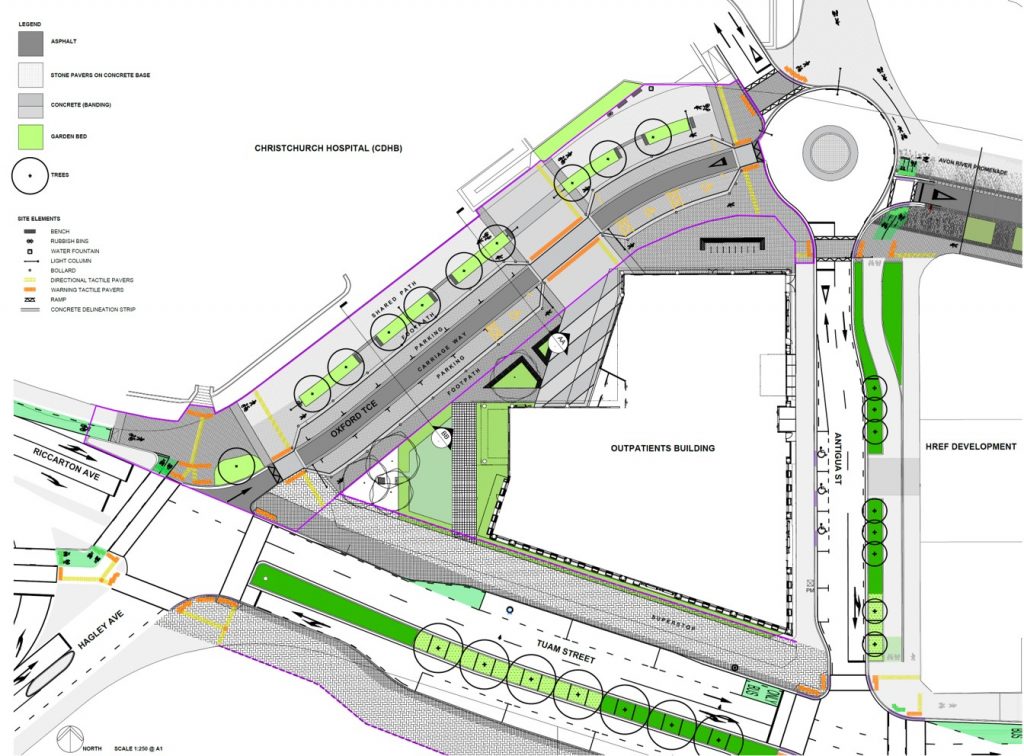
The following photos give an insight into the development. If it is an area of the city you don’t frequent too often, read on. In case there is further controversy over the coming months, let’s predict what it may be about.
From a cycling perspective, this meeting of the modes will provide an infinitely improved experience when negotiating this 107m section of ‘road’ than previously, so let’s not lose that perspective. The initial plan sent alarm bells through the minds of many; every cyclist commuting into the CBD or approaching the hospital from the south, south west, or west would end up conflicting with hospital and outpatient pedestrians and vehicles. However, work done subsequently has mitigated this risk a little.
Firstly, the St Asaph St bi-directional shared path from Hagley Park to Antigua Street diverts cycle traffic away from the Oxford Gap for those who wish to get to the city centre and further east. The Antigua St intersections with St Asaph and Tuam Sts are now upgraded to give easy and safe movement through, linked by a shared path. The Tuam St separation is complete. Brilliant.
In the future, an upgraded shared path is expected to be created north of the new Acute Services Block and the Riverside Hospital buildings, diverting some western bike traffic via the Botanical Gardens into the city, via Rolleston Ave. Reopening access to the hospital grounds over the bridge from Rolleston Ave will also divert some bike traffic coming from the north away from the area.
So, although I don’t believe that the new infrastructure for this area has been future-proofed sufficiently, within the bigger scheme of things (for now) capacity should well be manageable. To give some context, the Acute Services Building itself ($600m) is expected to be at full capacity two years after the opening (whenever that will be). It is not a perfect world…
The other old favourite that needs mentioning here is ‘bikes and pedestrians harmoniously sharing the same real estate’.
No, the hoped-for bridge between the new Outpatients Building and hospital grounds has not been built. Whilst that would have solved some of the issues we are now likely to face, it would be difficult to imagine it being an aesthetic addition to the area, certainly not without considerable cost.
No, there is no priority for commuting cycles in this thoroughfare at all. Yes, mixing pedestrians, cycles, and scooters comes with certain risks, but more and more around the city it is becoming the norm. Difficult as it may be now, in time it will become a learned behaviour that speed and passing distances must be appropriate for the manoeuvre according to the age and fragility of the most vulnerable. Over the past 8 years I have noted that, despite there being more vehicle traffic on our roads, more and more vehicles seem to be better aware of how to safely overtake a bike. There are more bikes, therefore more awareness. Mixing pedestrians and bikes in certain areas (with adequate space) has the same effect. The more people aware of, and familiar with, the expected behaviour, the better it is for all.
The shared path on South Hagley Park is a great example of this. Initially there seemed to be conflict, as neither of the user groups fully understood the system. Now, on busy weekday periods, it appears that the majority walk or ride on the left, and there is ample room for safe overtaking. Weekends feel different though, particularly at Saturday sport times, the order is disrupted by many unfamiliar with the convention. Hopefully this will be the scenario for the Oxford Gap but, with a slightly reduced width to share with and the unforgiving stone wall as a boundary, a little more care and courtesy will be needed.
The concern about the Oxford Gap from groups advocating for access and safety for mobility restricted users seems warranted. Will the narrow gangway-like path for access up to the hospital grounds level be adequate now with increased foot traffic? Will those descending this path onto the crossing be adequately warned of cycle movements, just as those riding bikes are warned to look for pedestrians? There is little room for error at this point. It would have been good to have seen this conflict point dealt with differently.
I like the look of the space. Practically, I think that the areas for planting could have been narrower. A simple hedge would have adequately provided an effective barrier between the two paths, allow more width for each; I guess though, that would compromise water run-off filtering. Two differently coloured paved lanes could have indicated bike and pedestrian separation (noted in many European cities). For bikes, however, separation allows a higher speed, and this raises the risk of even more serious conflict at the crossing point.
The work is now complete. I look forward to finally getting a through pathway again…
The feedback has begun already.
What do you think of the completed Oxford Gap?

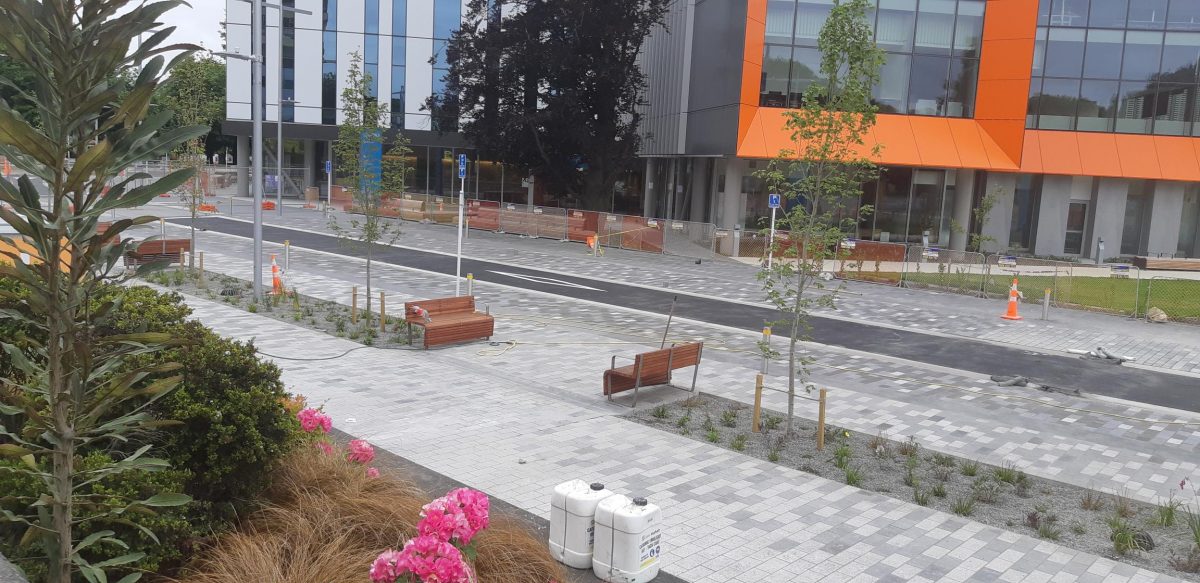
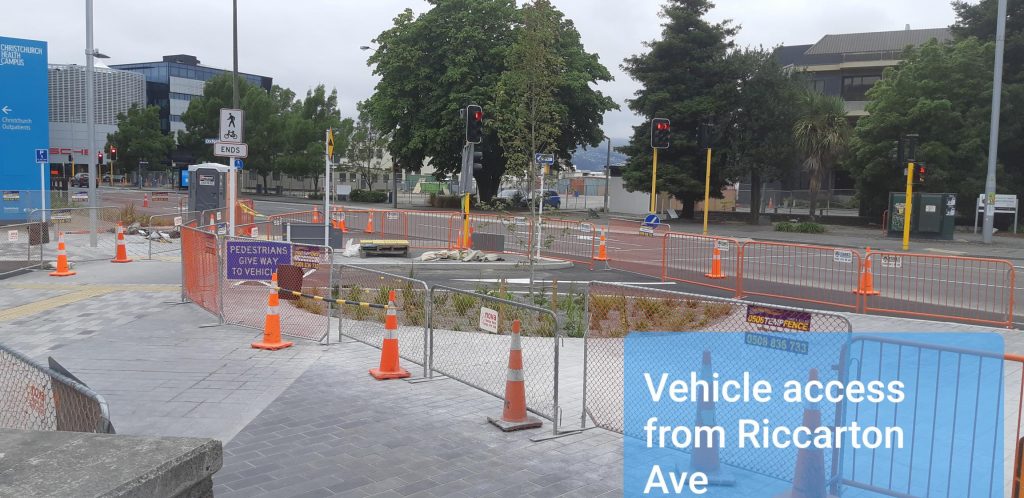
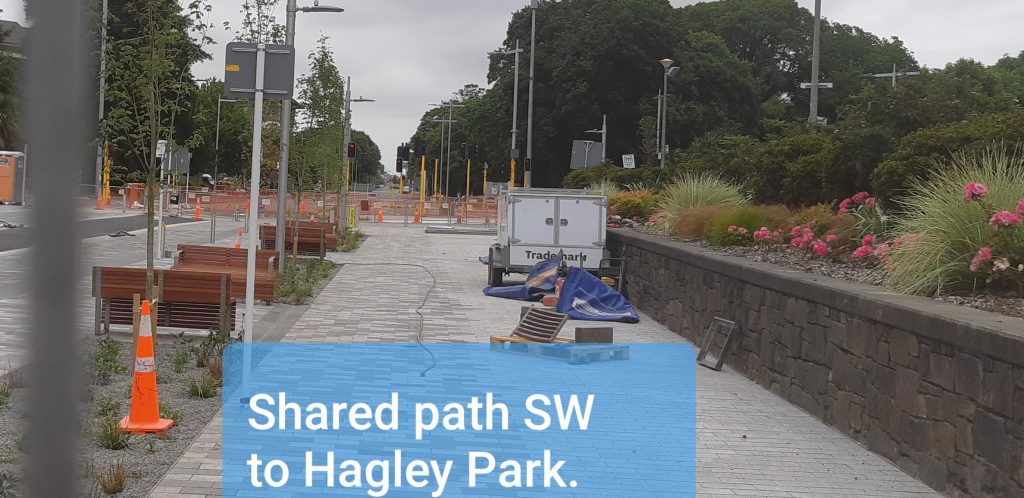

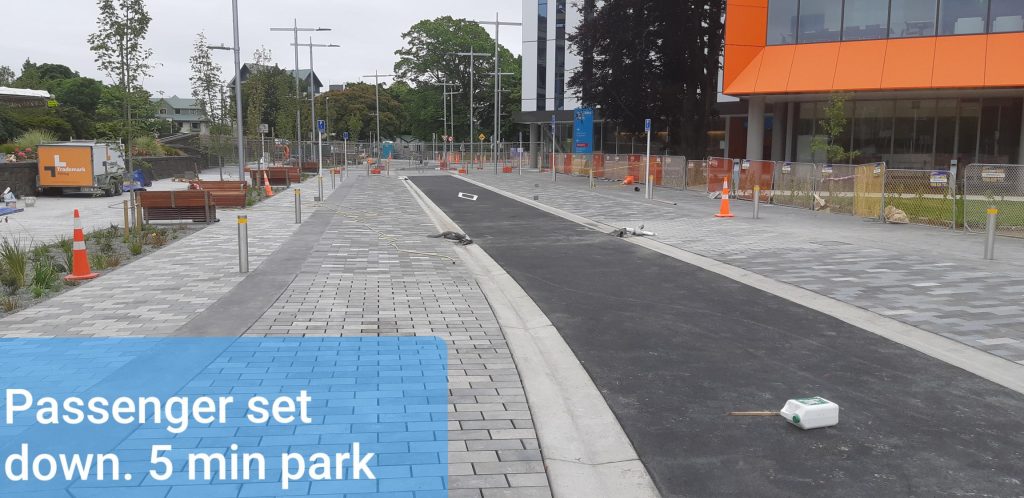
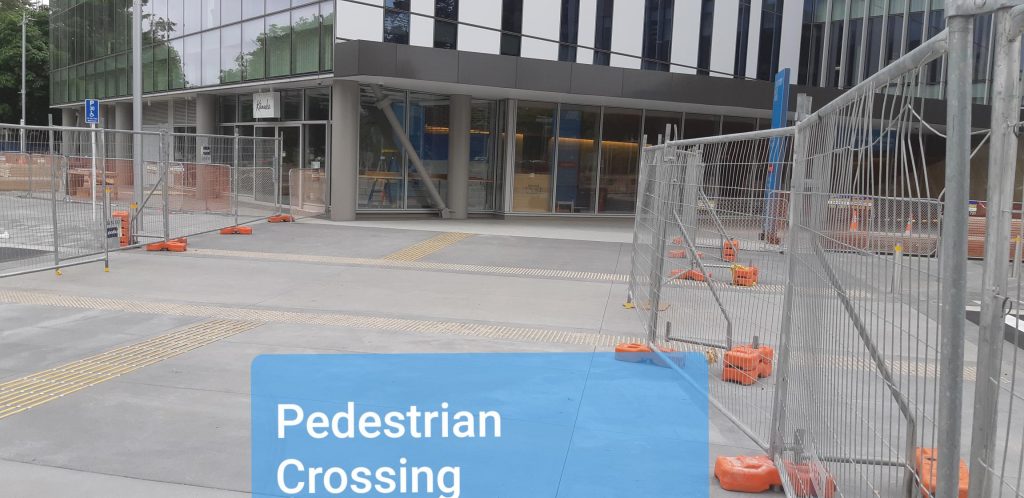
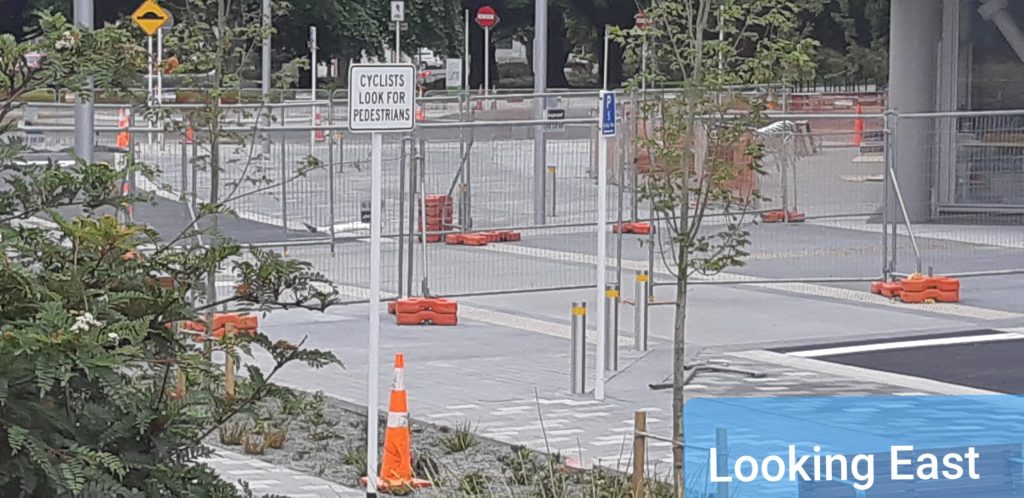
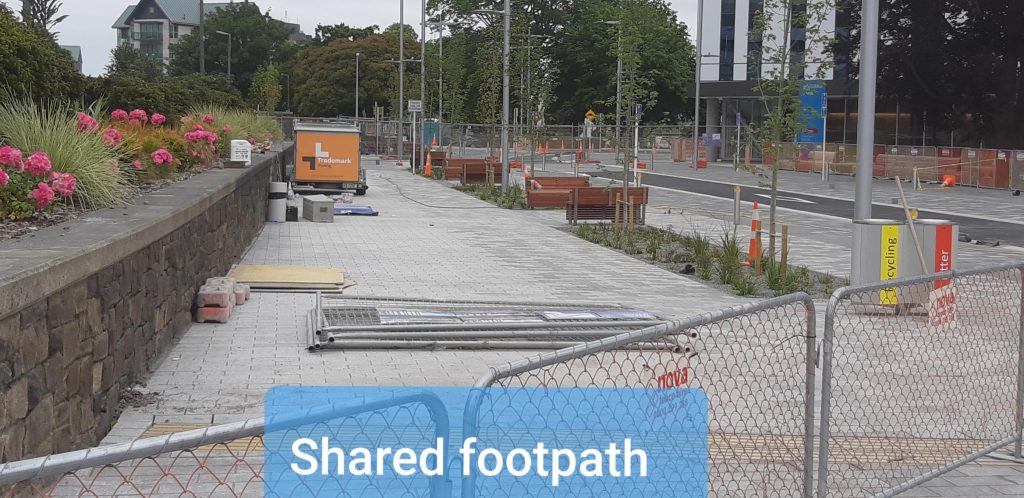


The Accessible City Plan, which this is a part of, provides not a single bit of infrastructure for cycle commuting.
This project puts a congested shared space blocking major cycle routes. While also failing to meet the needs of hospital and outpatient drop off and pick up. The disabled and elderly are put at risk.
Providing pick up and drop off on East Oxford Tce was an obvious solution.
There are other ‘fixes’ which could improve the project but Otakaro was adamant in rejecting public input. Ratepayers will be left funding the many mitigations this poorly designed and unsafe infrastructure needs.